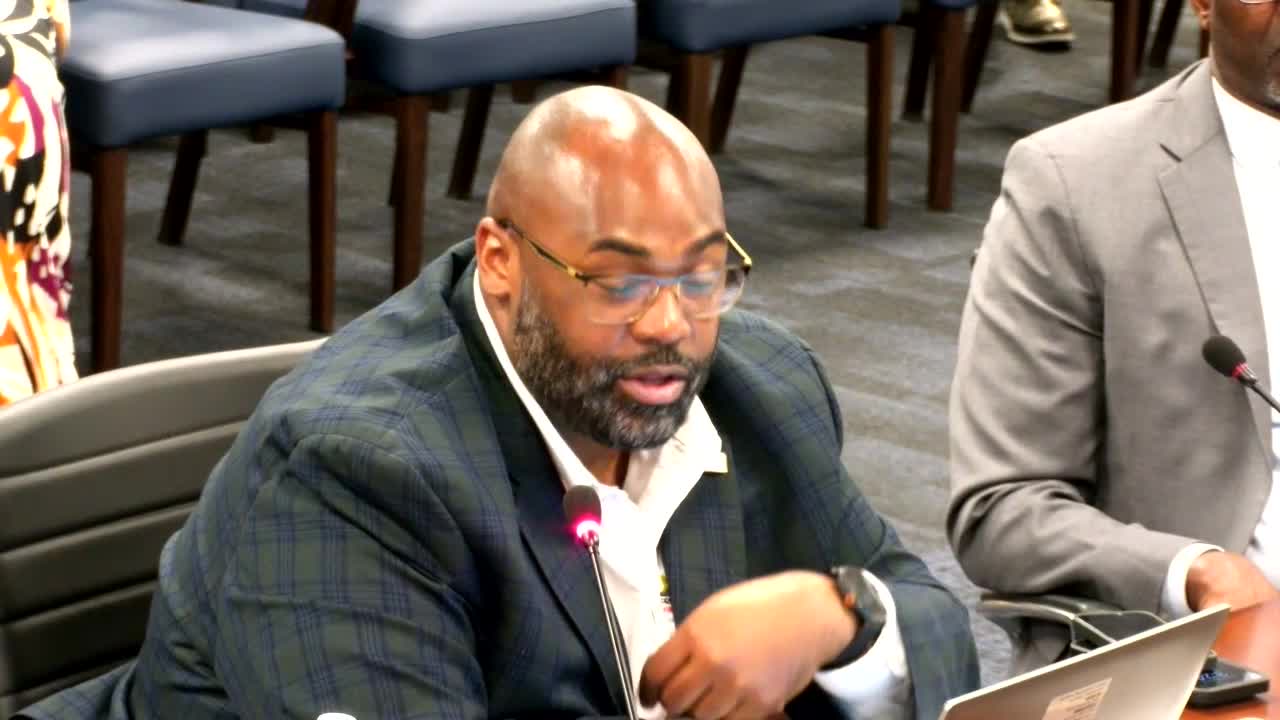Collaborative Efforts Boost Career Training for Students in PGCPS
September 08, 2025 | Prince George's County, Maryland
This article was created by AI summarizing key points discussed. AI makes mistakes, so for full details and context, please refer to the video of the full meeting. Please report any errors so we can fix them. Report an error »

In a recent meeting of the Education and Workforce Development Committee in Prince George's County, Maryland, discussions highlighted the need for improved coordination among local schools and workforce programs. As committee members gathered, the atmosphere buzzed with a shared commitment to enhancing educational outcomes for students, particularly those interested in career and technical education (CTE).
One of the key points raised was the lengthy process involved in contract approvals, exemplified by the two-year wait for the painters' union's contract. This delay underscores the challenges faced in aligning workforce development initiatives with educational institutions. Brian Cordian, a member of the county workforce board, noted that while progress has been made, there is still much work to be done to streamline these processes.
The committee also examined existing partnerships, such as the one between Peach Chest and the International Electrical Contractors (IEC) in Laurel. While this collaboration has successfully produced graduates, it serves a limited number of students—only about 20 compared to the potential 200. This disparity raises questions about how to expand such programs to benefit a larger student population.
Financially, the committee allocates between $100,000 and $150,000 annually for student transportation to field trips, which are not covered by the Prince George's County Public Schools (PGCPS) budget. This funding model, where schools submit invoices for transportation costs, reflects the fragmented nature of current educational support systems. Each school operates somewhat independently, leading to a lack of uniformity in program implementation.
The conversation turned to the potential for greater collaboration across schools, with members expressing a desire to unify efforts rather than operate in silos. The committee recognized that individual relationships with schools could hinder broader success, particularly in CTE programs. By consolidating resources and coordinating efforts, they believe graduation rates from these programs could improve significantly.
A proposal was made to explore successful models from other regions, such as the Advanced Technical Center in Washington, D.C., which effectively brings students together for specialized training in fields like health sciences and cybersecurity. This model, which includes transportation support and on-site learning with industry professionals, could serve as a blueprint for enhancing CTE offerings in Prince George's County.
As the meeting concluded, the committee members left with a renewed sense of purpose, eager to explore innovative solutions that could bridge the gaps in the current educational and workforce development landscape. The discussions underscored a collective commitment to ensuring that all students have access to the resources and opportunities they need to succeed in their future careers.
One of the key points raised was the lengthy process involved in contract approvals, exemplified by the two-year wait for the painters' union's contract. This delay underscores the challenges faced in aligning workforce development initiatives with educational institutions. Brian Cordian, a member of the county workforce board, noted that while progress has been made, there is still much work to be done to streamline these processes.
The committee also examined existing partnerships, such as the one between Peach Chest and the International Electrical Contractors (IEC) in Laurel. While this collaboration has successfully produced graduates, it serves a limited number of students—only about 20 compared to the potential 200. This disparity raises questions about how to expand such programs to benefit a larger student population.
Financially, the committee allocates between $100,000 and $150,000 annually for student transportation to field trips, which are not covered by the Prince George's County Public Schools (PGCPS) budget. This funding model, where schools submit invoices for transportation costs, reflects the fragmented nature of current educational support systems. Each school operates somewhat independently, leading to a lack of uniformity in program implementation.
The conversation turned to the potential for greater collaboration across schools, with members expressing a desire to unify efforts rather than operate in silos. The committee recognized that individual relationships with schools could hinder broader success, particularly in CTE programs. By consolidating resources and coordinating efforts, they believe graduation rates from these programs could improve significantly.
A proposal was made to explore successful models from other regions, such as the Advanced Technical Center in Washington, D.C., which effectively brings students together for specialized training in fields like health sciences and cybersecurity. This model, which includes transportation support and on-site learning with industry professionals, could serve as a blueprint for enhancing CTE offerings in Prince George's County.
As the meeting concluded, the committee members left with a renewed sense of purpose, eager to explore innovative solutions that could bridge the gaps in the current educational and workforce development landscape. The discussions underscored a collective commitment to ensuring that all students have access to the resources and opportunities they need to succeed in their future careers.
View full meeting
This article is based on a recent meeting—watch the full video and explore the complete transcript for deeper insights into the discussion.
View full meeting
